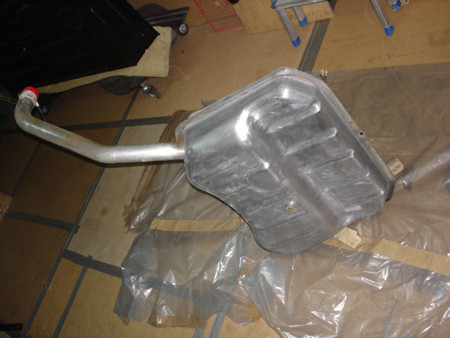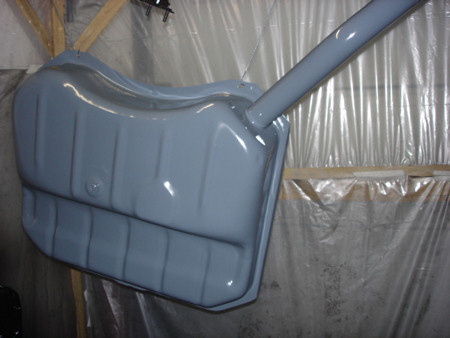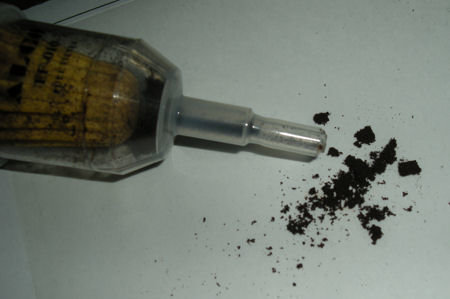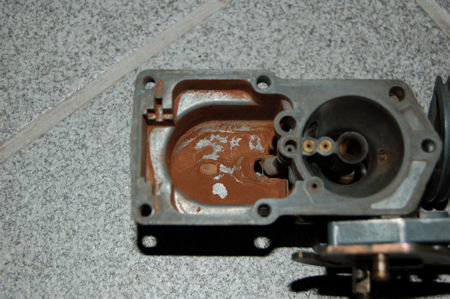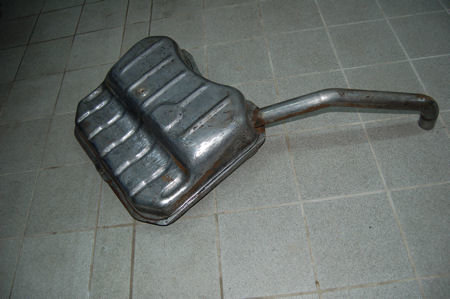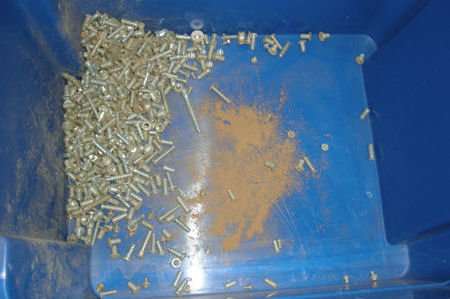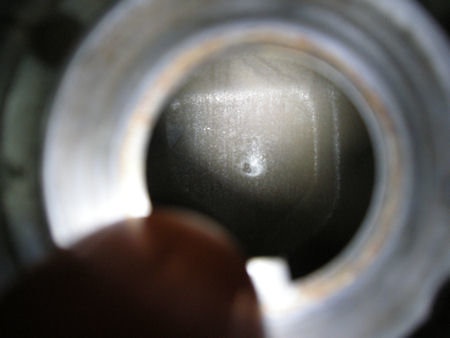Funny that this topic popped up right now.

I am in the midst of cleaning and prepping a tank as well.
When I did my resto back in 2009/2010 I only drained and flushed the fuel tank of my F6 van and just painted the outside.
http://www.renault4.co.uk/forum/showthread.php?t=3173&page=5
As I left the inside of the tank untouched (what turned out to be a bad idea) I am running a 2-filter-setup since the van got back on the street.
(In addition to the regular fuel filter in front of the carburettor I fitted a second inline filter right in front of the fuel pump.)
After 3 Years I still have to regularily change both filters as they fill up with nasty, grainy, brownish residue.
This stuff is so microscopic that it partially makes it's way through both filters and ends up in the carb as well. (See pictures below.)
To prevent that in the future I bought a used tank and will prepare that one thoroughly.
First step was to drain the tank and to clean it from the outside.
Then I removed the sending unit and flushed the tank with fresh petrol.
To remove any residue I added a handful of clean screws and nuts to the fuel in the tank and gave it a good shake.
You won't believe how filthy the mixture was when emptied out of the tank. :eek:
After that I flushed the tank with some thinners to clean it from any dirt and grease left inside.
Now I fought the rust inside. :evil:
I filled the tank again with a handful of clean screws and gave it a very good shake.
(See picture below of the screws and what came out the tank.)
I repeated that step a few times. Here a cement mixer would have come in very handy!

The last picture shows the clean and mostly rust free inside of the tank.
Next steps are ...
- Cleaning of the inside with some heavy duty dissolvent
- Fighting rust the chemical way (oxalic acid?)
- Converting rust inside (phosphoric acid)
- Sealing inside against rust (Kreem / Por15 / Tapox (Fertan) - I'm still undecided which product to use)
Cheers,
David






